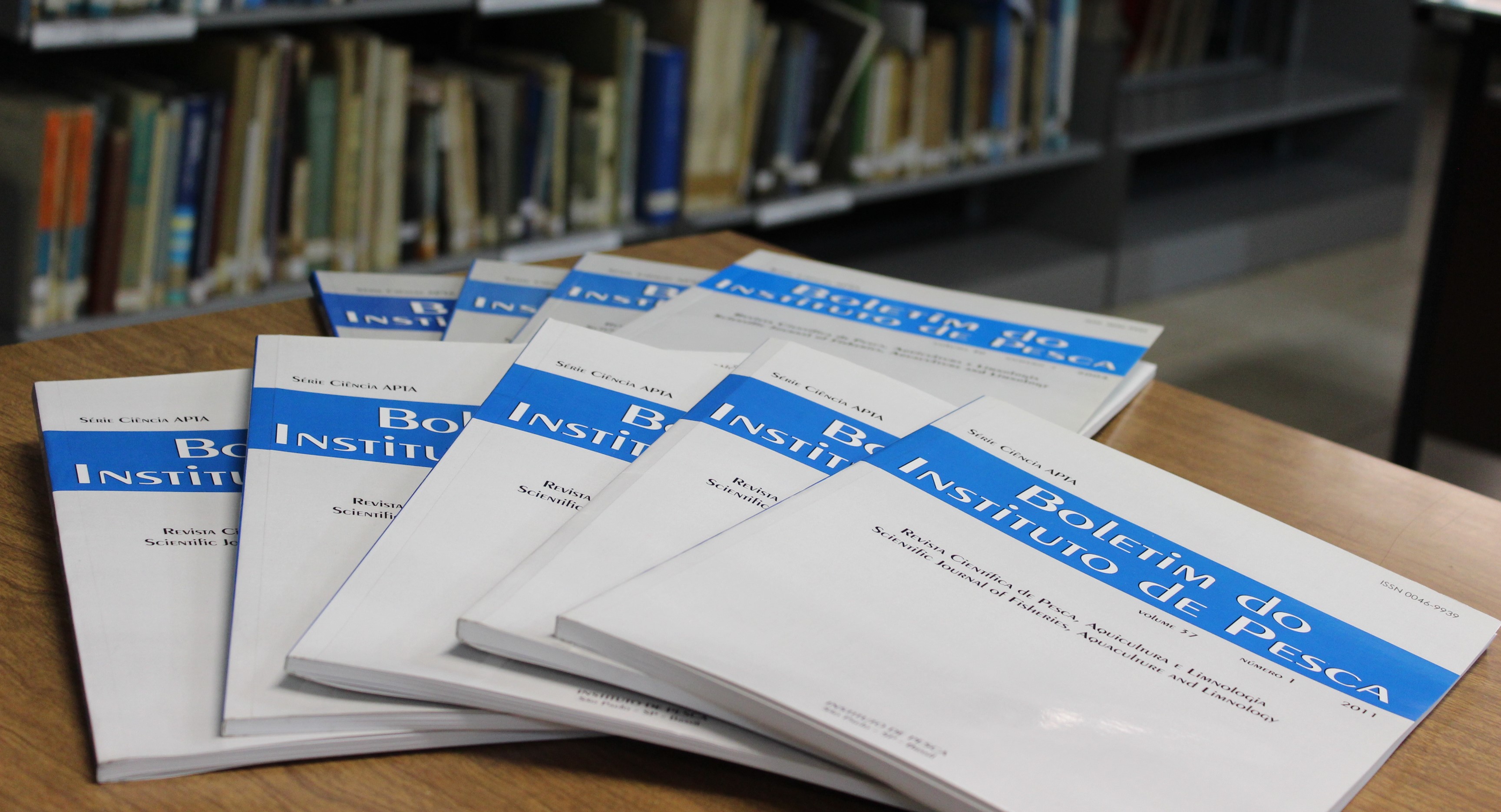Response of phytoplankton to different carbon sources and C:N ratios in tilapia fingerling culture with bioflocs.
DOI:
https://doi.org/10.20950/1678-2305.2018.255Keywords:
fish culture, Oreochromis niloticus, water qualityAbstract
The objectives of this study were to evaluate the dynamics and qualitative and quantitative aspects of the phytoplankton community during the fingerlings production of Nile tilapia (Oreochromis niloticus) using biofloc technology. A complete randomized design, with 6 treatments and 4 replications was used. Three carbon sources molasses (M), sugar (S) and cassava starch (CS) at carbon:nitrogen (C:N) ratios of 10:1 and 20:1 were evaluated. Phytoplankton was collected weekly during 63 days using 5 L water samples that were filtered through a 25 μm mesh plankton net. The phytoplankton community was represented by 17 genera of the Bacillariophyceae, Chlorophyceae, Cyanophyceae, Euglenophyceae, and Fragilariophyceae classes. Pseudanabaena and Synechococcus were the main genera responsible for the dominance of the Cyanophyceae class in all treatments. Chlorophyceae was the second most diverse class, whose main genera were Chlorella and Scenedesmus. Molasses at C:N ratio of 20:1 were the carbon source that most affected the phytoplankton development
References
AVNIMELECH, Y. 2009 Biofloc technology: a pratical guide book. Baton Rouge: The World Aquaculture Society. 182p.
AZIM, M.E.; LITTLE, D.C. 2008 The biofloc technology (BFT) in indoor tanks: Water quality, biofloc composition, and growth and welfare of Nile tilapia (Oreochromis niloticus). Aquaculture (Amsterdam, Netherlands), 283(1-4): 29-35. http://dx.doi.org/10.1016/j.aquaculture.2008.06.036.
BEVERIDGE, M.C.M. 1996 Cage aquaculture. 2nd ed. Oxford: Fishing News Books. 346p.
BICUDO, C.E.M.; BICUDO, D.C. 2004 Amostragem em limnologia. 2. ed. São Carlos: RiMa. 371p.
CALIJURI, M.C.; ALVES, M.S.A.; SANTOS, A.C.A. 2006 Cianobactérias e cianotoxinas em águas continentais. São Carlos: RiMa. 118p
COLLAZOS-LASSO, L.F.; ARIAS-CASTELLANOS, J.A. 2015 Fundamentos de la tecnología biofloc (BFT). Una alternativa para la piscicultura en Colombia: una revisión. Orinoquia (Universidad Tecnologica de los Llanos
Orientales), 19(1): 77-86. http://dx.doi.org/10.22579/20112629.341.
EBELING, J.M.; TIMMONS, M.B.; BISOGNI, J.J. 2006 Engineering analysis of the stoichiometry of photoautotrophic, autotrophic, and heterotrophic removal of ammonia-nitrogen in aquaculture systems. Aquaculture (Amsterdam, Netherlands), 257(1-4): 346-358. http://dx.doi.org/10.1016/j.aquaculture.2006.03.019.
EKASARI, J.; RIVANDI, D.R.; FIRDAUSI, A.P.; SURAWIDJAJA, E.H.; ZAIRIN JUNIOR, M.; BOSSIER, P.; DESCHRYVER, P. 2015 Biofloc technology positively affects Nile tilapia (Oreochromis niloticus) larvae performance. Aquaculture (Amsterdam, Netherlands), 441(1): 72-77. http://dx.doi.org/10.1016/j.aquaculture.2015.02.019.
ELER, M.N.; CAMPAGNA, A.F.; MINILLO, A.; RIBEIRO, M.A.R.; ESPÍNDOLA, E.L.G. 2009 Water quality, toxicity and Gill lesions caused by intraperitoneally administered water-bloom crude extract in Brycon cephalus (Gu, 1896; Characidae) from free-fishing ponds in São Paulo state, Brazil. Acta Limnologica Brasiliensia, 21(1): 89-100.
FAO í Food and Agriculture Organization. 2014 Fishstat plus: universal software for fisherystatistical time series. Version 2.3. Rome: FAO. Available from: <http://www.fao.org/fishery/ statistics/software/
fishstat/en>. Access on: 10 out. 2015.
FRANCESCHINI, I.M.; BURLIGA, A.L.; REVIERS, B.; PRADO, J.F.; RÉZIG, S.H. 2010 Algas: uma abordagem filogenética, taxonômica e ecológica. Porto Alegre: Artmed. 332p.
ISMAEL, A.A. 2012 Benthic bloom of cyanobacteria associated with fish mortality in Alexandria waters. Egyptian Journal of Aquatic Research, 38(4): 241-247. http://dx.doi.org/10.1016/j.ejar.2013.01.001.
KUHN, D.D.; BOARDMAN, G.D.; LAWRENCE, A.L.; MARSH, L.; FLICK JUNIOR, G.L. 2009 Microbial floc meal as a replacement ingredient for fish meal and soybean protein in shrimp feed. Aquaculture (Amsterdam, etherlands), 296(1-2): 51-57. http://dx.doi.org/10.1016/j.aquaculture.2009.07.025.
LIN, C.K.; YI, Y. 2003 Minimizing environmental impacts of fresh water aquaculture and reuse of pond effluents and mud. Aquaculture (Amsterdam, Netherlands), 226(1-4): 57-68. http://dx.doi.org/10.1016/
S0044-8486(03)00467-8.
LOURENí"¡O, S.O. 2006 Cultivo de microalgas marinhas: princípios e aplicações. São Carlos: RiMa. 606p.
MARGALEF, R. 1983 Limnología. Barcelona: Ediciones Omega. 1010p.
MARTINEZ-CORDOVA, L.R.; CAMPANA TORRES, A.; PORCHASCORNEJO, M.A. 2003 Dietary protein level and natural food management in the culture of blue (Litopenaeus stylirostris) and white shrimp (Litopenaeus vannamei) in microcosms. Aquaculture Nutrition, 9(3): 155-160. http://dx.doi.org/10.1046/j.1365-2095.2003.00235.x.
PEREIRA-NETO, J.B.; DANTAS, D.M.M.; GÁLVEZ, A.O.; BRITO, L.O. 2008 Avaliação das comunidades planctônicas e bentônicas de microalgas em viveiros de camarão (Litopenaeus vannamei). Boletim do Instituto de Pesca, 34(4): 543-551.
PÉREZ-FUENTES, J.A.; HERNÁNDEZ-VERGARA, M.P.; PÉREZ-ROSTRO, C.I.; FOGEL, I. 2016 C:N ratios affect nitrogen removal and production of Nile tilapia Oreochromis niloticus raised in a biofloc system under high density cultivation. Aquaculture (Amsterdam, Netherlands), 452(1): 247-251. http://dx.doi.org/10.1016/j.aquaculture.2015.11.010.
RODGERS JUNIOR, J.H. 2008 Algal toxins in pond aquaculture. Washington: United States Department of Agriculture, Cooperative State Research, Education, and Extension Service. (Southern Regional Aquaculture
Center, 4605).
SANT’ANNA, C.L.; TUCCI, A.; AZEVEDO, M.T.P.; MELCHER, S.S.; WERNER, V.R.; MALONE, C.F.S.; ROSSINI, E.F.; JACINAVICIUS, F.R.; HENTSCHKE, G.S.; OSTI, J.A.S.; SANTOS, K.R.S.; GAMAJUNIOR, W.A.; ROSAL, C.; ADAME, G. 2012 Atlas de cianobactérias e microalgas de águas continentais brasileiras. São Paulo: Instituto de Botí¢nica, Núcleo de Pesquisa em Ficologia. 175p. Available from: <www.ibot.sp.gov.br>. Access on: 10 out. 2015.
SANTOS, D.R.; MELO, F.P.; COSTA, W.M.; SILVA, U.L.; LIMA, J.P.V.; CORREIA, E.S. 2008 Melaço na produção de fitoplí¢ncton em tanques berçário estáticos de Litopenaeus vannamei. In: CYRINO, J.E.P.; FURUYA, W.M.; RIBEIRO, R.P.; SCORVO FILHO, J.D. Tópicos especiais em biologia aquática e aquicultura III. Jaboticabal: Sociedade
Brasileira de Aquicultura e Biologia Aquática. cap. 28. p. 295-305.
SILVA, U.L.; CAMPOS, S.S.; CORREIA, E.S. 2008 Efeitos de fertilizantes orgí¢nicos e inorgí¢nicos na abundí¢ncia macro e meiobentos e na qualidade da água do cultivo do camarão Litopenaeus vannamei (Boone, 1931). Atlí¢ntica, 31(1): 23-33.
THOMPSON, F.L.; ABREU, P.C.; WASIELESKY, W. 2002 Importance of biofilm for water quality and nourishment in intensive shrimp culture. Aquaculture (Amsterdam, Netherlands), 203(3-4): 263-278. http://
dx.doi.org/10.1016/S0044-8486(01)00642-1. TUNDISI, J.G.; TUNDISI, T.M. 2008 Limnologia. São Paulo: Oficina de
Textos. 631p.
VIDAL, L.; MENDONí"¡A, R.F.; MARINHO, M.M.; CESAR, D.; ROLAND, F. 2005 Caminhos do carbono em ecossistemas aquáticos continentais. In: ROLAND, F.; CESAR, D.; MARINHO, M. Lições de limnologia. São Carlos: RiMa. p. 193-243.
WASIELESKY JUNIOR, W.; ATWOOD, H.; STOKES, A.; BROWDY, C.L. 2006 Effect of natural production in a zero exchange suspended microbial floc based super-intensive culture system for white shrimp Litopenaeus vannamei. Aquaculture (Amsterdam, Netherlands), 258(1-4): 396-403. http://dx.doi.org/10.1016/j.aquaculture.2006.04.030. ZAR, J.H. 1996 Biostatistical analysis. New Jersey: Prentice Hall. 662p.










